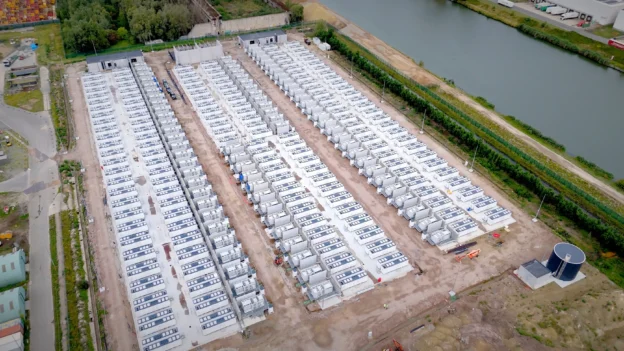In a decisive move towards modernizing the European electricity system, Sungrow and ENGIE have successfully connected the first 400 MWh of the Vilvoorde project, the largest battery storage system in continental Europe, to the grid. The facility, located in Vilvoorde, Belgium, is expected to reach 800 MWh upon completion in 2025,
A project that strengthens the Belgian network
At the heart of the Vilvoorde project are the units PowerTitan units developed by Sungrow, large-scale, liquid-cooled battery energy storage (BESS) units. Their design is optimized to maximize space utilization while providing efficient and automated thermal control.
Currently, the first half of the 200 MW/800 MWh system is already operational with 320 of these units and it is projected that the facility will absorb the surplus of renewable energy at times of low demand to be released during consumption peaks, guaranteeing a reliable supply for more than 96,000 households.
With a total capacity of 200 MW and 800 MWh of storage, the facility will be able to supply 96,000 homes for four hours. Source: Sungrow.
Strategic collaboration between industry and technology
The success of the battery storage system is based on the strategic collaboration between ENGIE, as system operator and owner, whose role is to manage the infrastructure to provide flexibility services to the Belgian electricity system; and Sungrow who is providing the storage technology storage technology storage technology and supports the project with its technical know-how and presence in the European market.
Strategic importance of the project
The ability to absorb surplus energy will help balance supply and demand, mitigate grid congestion problems and provide the flexibility to integrate a higher percentage of renewable energy. In addition, the use of PowerTitan units represents a 50% savings in construction time due to the ease of installation derived from their design.
The Vilvoorde project is a key piece in the European energy puzzle, seeking to provide the flexibility and stability needed for renewables to become the backbone of the electricity supply. The second stage of the project plans to add another 400 MWh and is scheduled for completion by the end of 2025.
Source and Video: Sungrow.



